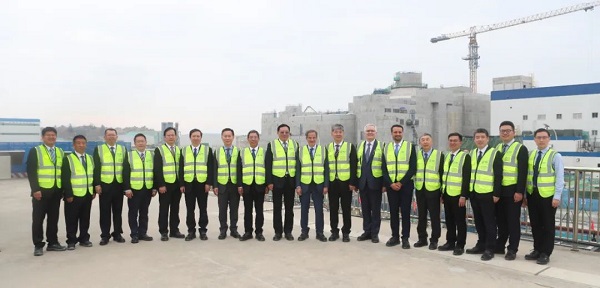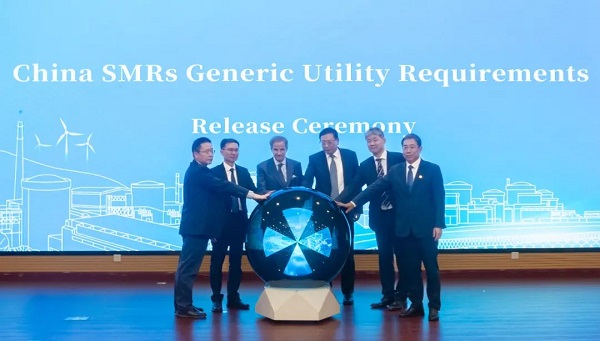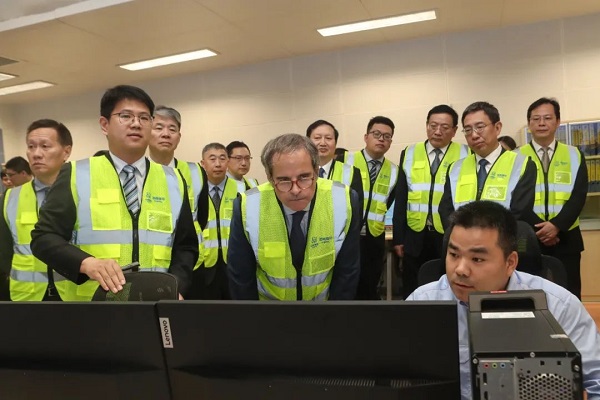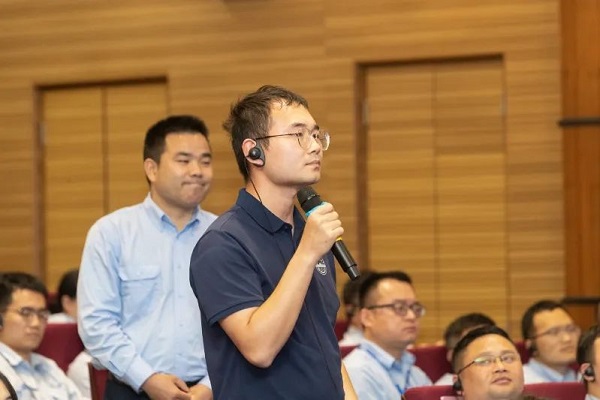
Rafael Mariano Grossi, director-general of the International Atomic Energy Agency (IAEA), visited Changjiang Nuclear Power Plant of the China National Nuclear Corporation (CNNC) and conducted an on-site inspection of the world's first commercial small modular reactor (SMR) on land, also known as the Linglong One, in South China's Hainan province on April 8.
Grossi attended the release ceremony of the China SMRs Generic Utility Requirements. He spoke highly of China's exemplary role in global nuclear power development and the country's progress in the research and development of the SMR technology, noted that China has provided other developing countries with an efficient and cost-effective energy solution through the massive building of nuclear power plants and the extensive utilization of its self-developed SMR technology, and added that China's nuclear power development has offered the world an example and that its Linglong One project has become a global model for the SMR development.

"The development of nuclear energy is a pivotal approach for the world to achieve decarbonization and strengthen environmental conservation. There are tremendous potentials for nuclear energy development in the years ahead," said Grossi. He also interacted with over 100 Chinese teachers and students at an international open day gathering for the SMR. He emphasized that the SMR technology boasts such advantages as short construction period, minimal land use and flexible supply chains and that it can further improve energy structure, facilitate the realization of carbon reduction goals, and be highly applicable for relevant countries with limited land resources.
In addition, the nuclear energy has been widely utilized in multiple fields like cancer diagnosis and treatment and agricultural development.


The newly-released China SMRs Generic Utility Requirement was compiled by China Nuclear Power Co., a subsidiary of the CNNC, with the support of the Nuclear and Radiation Safety Center under the Ministry of Ecology and Environment, Tsinghua University, and other relevant organizations. It consists of 25 chapters, which cover over 8,000 specific requirements in 1,180 items in terms of objectives, policies and principles, general technological support and technological outlines, encompasses Chinese wisdom, practices and experiences in the design, construction, operation and supervision of the SMR projects, fills domestic gap of technological standards concerning the SMR, and lays a foundation for the industrial deployment of the SMR projects.


The publication of the regulatory document has further consolidated Chinese discourse in the research and development as well as application of the SMR technology, and marked a new stage for China's independent innovation and international cooperation of the SMR technology. It will further support the global deployment of Chinese SMR technology and facilitate the realization of the world's carbon reduction and neutrality goals.

The Linglong One is the first commercial SMR worldwide on land that has passed the IAEA's safety review. It has become a major breakthrough for China in independent nuclear power innovation and relevant construction experience and has served as a model for international SMR projects. Each Linglong One unit has a power production capacity of 125,000 kilowatts and can generate up to one billion kilowatt-hours of electricity annually, equivalent to the needs of over one million people. It equals to the reduction of 880,000 tons of carbon dioxide emissions and the plantation of 7.5 million trees. The Linglong One project features miniaturization, modularization, integration and passive safety. It is able to not only generate electricity but also provide district heating, seawater desalination, and industrial steam supply upon completion.

Hainan Nuclear Power Co., Ltd is an important strategic stronghold of the CNNC in South China and it has supplied about one fourth of Hainan's electricity. In addition to possessing the cutting-edge Linglong One technology, the Changjiang Nuclear Power Plant also boasts a beautiful and ecological environment. It has successfully bred Pinctada maxima (internationally second-class protective animals) and produced pearls with a diameter of up to 18mm. These accomplishments have filled domestic technical gaps and contributed wisdom of the company to global marine biodiversity conservation.

